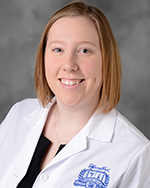With Nonnatus house facing cuts, Andrea Altomaro explains why nursing and midwifery care is so much more than collecting vital signs and listening to babies’ heartbeats.
Editor’s Note: The opinions expressed in this blog post are solely those of the author.
Spoiler Alert: This post discusses events in Call the Midwife Season 6 Episode 2
After six seasons of Call the Midwife, I should probably stop being surprised at the parallels between themes and events occurring with our fictional friends at Nonnatus house and my modern day midwifery practice, but it never ceases to amaze me.
With new management in place, Nonnatus house is being run like a tight ship. Sister Ursula informed the staff that they can no longer go above and beyond for their patients, and that they need to strictly adhere to their scheduled duties. This is quite similar to what we often hear today; efficiency and cost savings are driving most modern practices. Providers need to see a certain number of patients per day, we should be doing more deliveries this year than we did last year, and we need to keep doing the same amount of work (or more!) without adding additional staff. Often, this is where we feel like the quality of care might suffer. It seemed apparent to me right away that the midwives of Nonnatus house immediately felt like the new orders from Sister Ursula were a threat to their very drive as nurses, nuns, and midwives.
Nursing is inherently a profession of caring. Whether or not people still feel the same way after 40 years on the job (and I certainly hope they do), most people go into nursing because they have a desire to help people and wish to make a difference in the lives of their patients. Caring is so essential to nursing practice that we include the fundamental art of caring in our developed nursing theories (Meyer & Lavin, 2005). What the nurse midwives of Nonnatus house were trying to get through to Sister Ursula is that nursing and midwifery care is so much more than collecting vital signs, checking fundal heights (that is, measuring someone’s pregnant belly), and listening to babies’ heartbeats. This sort of essence of nursing is described as professional nursing vigilance. That is, a nurse is constantly assessing the situation; this includes the physical, emotional, and spiritual needs of the patient, and they will do this while analyzing the facts to decide what it all means, anticipating what might happen, and being ready to act at any moment (Meyer & Lavin, 2005).
For example, when Sister Winifred help collect a few baskets of food for Jessie Marsh, she wasn’t doing it because she thought Jessie was immediately starving and malnourished, and medically needed the food right then. She had spent enough time with Jessie and had observed her home life, and realized that she was under a lot of stress with a new baby, a mother with severe arthritis, and a critically injured husband. Sister Winifred also knew that the Marshes were struggling financially. She also could see ahead to the impact that this could have on Jessie’s recovery from childbirth. If Jessie is stressed about her husband and their financial situation, she will have a harder time taking care of herself, and therefore a harder time taking care of her baby. It could impact breastfeeding and bonding with the baby. While a gift basket of fruits, vegetables, and biscuits might not seem like much in the long run, it was the kind gesture that counted. Sister Winifred was showing Jessie that her neighbors cared for her, and that they would help her through this time. Knowing that she had the support of the midwives and her community seemed to help Penny considerably.
I saw the same vigilance from Patsy as she cared for Penny Reed, the mother with achondroplasia. Despite the strict warning given from Sister Ursula about sticking to their assigned duties only, Patsy rushed to the hospital to be by Penny’s side for her cesarean section. She also stayed after, helping Penny regain confidence in herself as a mother, the same confidence that had allowed Penny to stay hopeful and positive throughout her pregnancy when there had been so many unknowns about the future of her baby. I watched with tears in my eyes as Patsy stood up to Sister Ursula after returning back to Nonnatus, defending her actions.
I have seen the same fierce devotion to patients in my nursing and midwifery colleagues today. I am so glad that we work in an environment at Henry Ford West Bloomfield Hospital that encourages and understands the importance of this nursing vigilance; our work is so much more than providing medications and gathering data. It involves the caring and expertise that the nursing and midwifery professions have become so well known for.
 Andrea Altomaro (MS, RN, CNM) has been nurse-midwife for the past three years and is currently working for the Henry Ford Health System. Before becoming a midwife, she worked as a nurse in the emergency department and also in labor and delivery.
Andrea Altomaro (MS, RN, CNM) has been nurse-midwife for the past three years and is currently working for the Henry Ford Health System. Before becoming a midwife, she worked as a nurse in the emergency department and also in labor and delivery.
Read More About Andrea | Read All Posts by Andrea
References
Meyer, G., Lavin, M.A. (June 23, 2005). "Vigilance: The Essence of Nursing". OJIN: The Online Journal of Issues in Nursing. Vol 10 No 1.